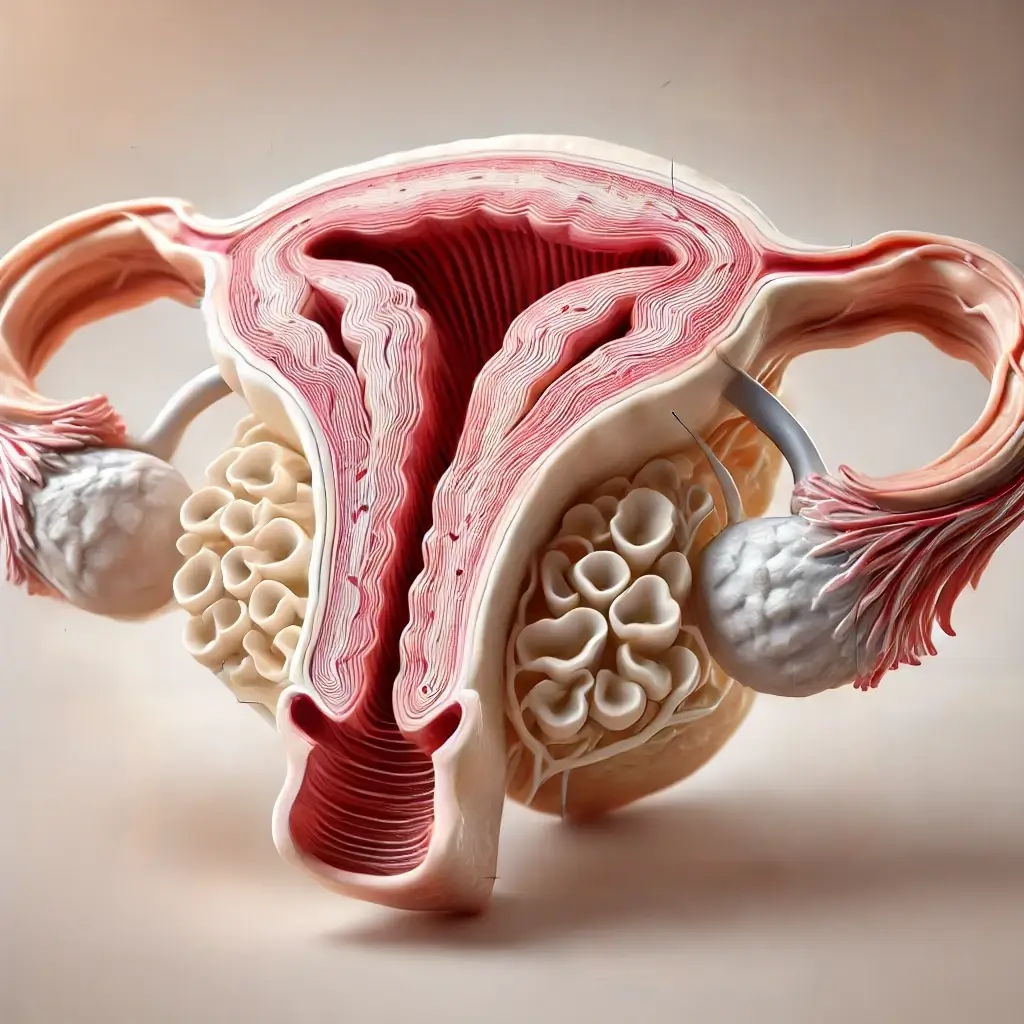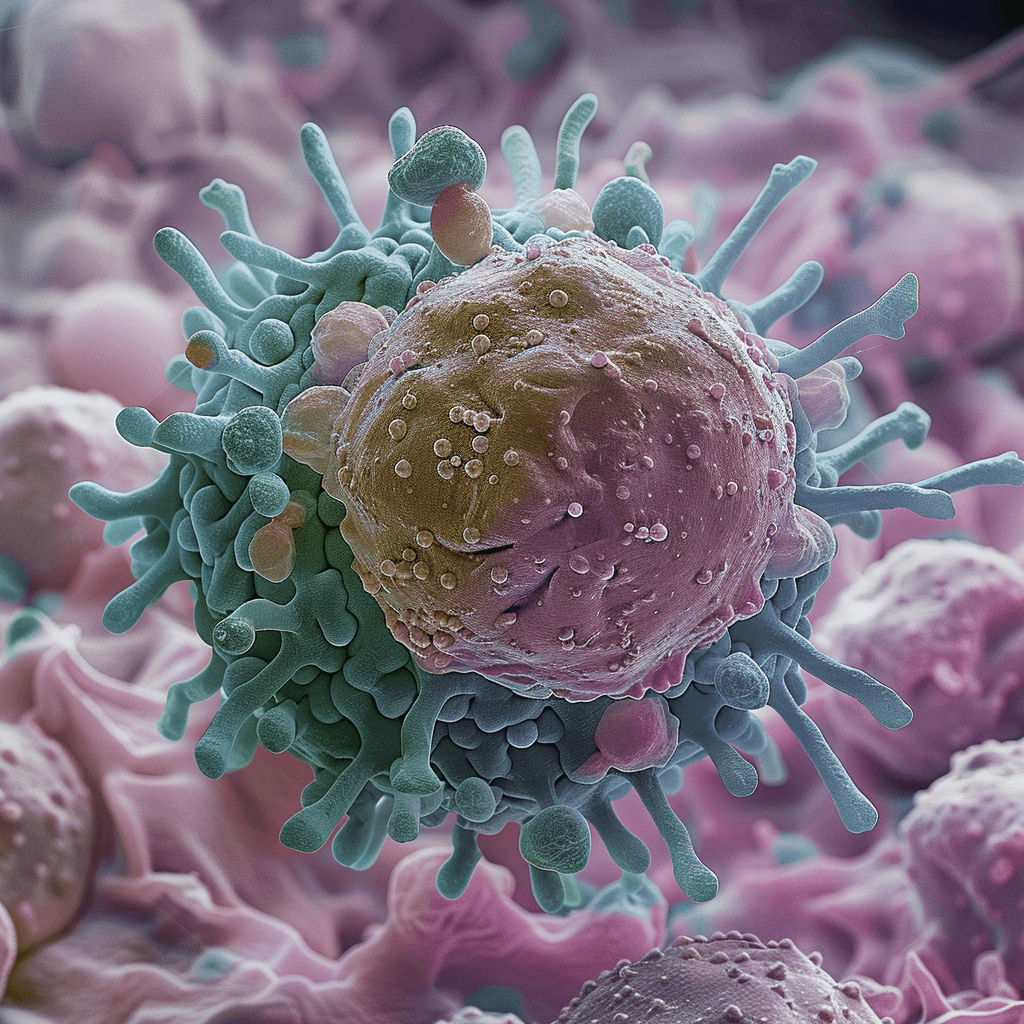Book Appointment Now
Understanding Endometrial Cancer

Endometrial Cancer Guide
Introduction
Endometrial cancer is a type of cancer that begins in the lining of the uterus, known as the endometrium. The uterus is a pear-shaped organ where fetal development occurs during pregnancy, and the endometrium is the layer that thickens each month in preparation for a potential pregnancy. When cells in this lining grow uncontrollably, they can form a tumor, leading to endometrial cancer.
Endometrial cancer is important to study because it is the most common type of cancer affecting the female reproductive organs. Recent advancements in treatment include targeted therapies and immunotherapy options, which offer new hope for patients. Understanding this type of cancer is crucial for early detection, which greatly improves treatment outcomes.
Statistics
Endometrial cancer affects about 1 in 37 women during their lifetime. It is most commonly diagnosed in postmenopausal women, typically between the ages of 50 and 60. In the United States, over 65,000 new cases are reported each year, with approximately 12,000 related deaths. Fortunately, when caught early, the 5-year survival rate is around 95%. However, survival rates can vary significantly depending on the stage at diagnosis, making awareness and early detection essential.
Medical Illustrations
Detailed microscopic view of an endometrial cancer cell:

MRI scan of the pelvic region affected by endometrial cancer:

Risk Factors and Prevention
a. Known Risk Factors
Several factors can increase a woman’s risk of developing endometrial cancer. One of the most significant risk factors is hormonal imbalance. Conditions that increase estrogen levels, such as polycystic ovary syndrome (PCOS) or hormone replacement therapy without progesterone, may elevate the risk. Obesity also plays a key role because excess fat tissue can produce extra estrogen. Genetics can also be a factor; women with Lynch syndrome, an inherited condition, are at higher risk.
b. Prevention
While there is no guaranteed way to prevent endometrial cancer, there are several ways to reduce the risk. Maintaining a healthy weight through regular exercise and a balanced diet can help reduce the risk of obesity-related endometrial cancer. Women should also discuss hormone therapy options carefully with their healthcare providers to ensure a balance between estrogen and progesterone. Birth control pills have been shown in some studies to lower the risk of endometrial cancer, especially when taken for several years.
Screening
Currently, there is no standard screening test for endometrial cancer for women without symptoms. However, for women with a higher risk (such as those with Lynch syndrome), doctors may recommend yearly ultrasounds or biopsies.
Symptoms and Early Warning Signs
Endometrial cancer often presents with clear symptoms in its early stages, which is why it is commonly detected early. The most common symptom is abnormal vaginal bleeding, especially in postmenopausal women. For younger women, this could mean unusually heavy or prolonged menstrual bleeding. Other symptoms include pelvic pain, pain during intercourse and unusual vaginal discharge. If you notice any of these symptoms, it is important to consult a healthcare provider.
Diagnosis
If endometrial cancer is suspected, a doctor will usually conduct a transvaginal ultrasound to look for abnormalities in the uterus or perform an endometrial biopsy to collect a sample of tissue for testing. The biopsy is the most definitive way to diagnose endometrial cancer.
Stages
Types of Treatment
Overview of Treatment Modalities
Treatment for endometrial cancer depends on the stage at which it is diagnosed. The primary treatment is surgery, usually involving a hysterectomy (removal of the uterus), sometimes along with the removal of the ovaries and fallopian tubes. Radiation therapy may be used to target any remaining cancer cells, especially if the cancer has spread. Chemotherapy is used in more advanced cases, where the cancer has spread beyond the uterus. More recently, immunotherapy and targeted therapy have emerged as options for certain patients, particularly those with advanced or recurrent cancer. These treatments help the body’s immune system fight the cancer or target specific cancer cell characteristics to stop growth.
Comparing Treatments
| Treatment | Mechanism | Side Effects | Efficacy (Survival Rate) | Study/Trial |
|---|---|---|---|---|
| Surgery | Removal of cancer tissue | Postoperative pain | 95% (early-stage) | Johnson et al., 2021 |
| Radiation | Destroys cancer cells | Fatigue, skin changes | 60-80% (varies by stage) | Miller et al., 2020 |
| Chemotherapy | Inhibits cell division | Hair loss, nausea | 50% (advanced cases) | Smith et al., 2022 |
| Immunotherapy | Boosts immune response | Fatigue, rash | 65% (advanced cases) | Doe et al., 2023 |
Living with Endometrial cancer
Being diagnosed with endometrial cancer can be emotionally and physically challenging. It is important to maintain a support network—friends, family, or support groups can offer comfort and understanding. Nutrition plays a critical role in managing energy levels; a balanced diet rich in fruits, vegetables and whole grains can help the body cope with treatment. Regular, gentle exercise, such as walking or yoga, can improve mood and reduce fatigue. Mental health is equally important—seeking counseling or joining a cancer support group can be beneficial for emotional well-being.
Additional Resources
Key Takeaways
- Endometrial cancer starts in the lining of the uterus and is most common in postmenopausal women.
- Symptoms include abnormal vaginal bleeding and pelvic pain—early detection improves outcomes.
- Maintaining a healthy weight and balancing hormone therapy can help reduce the risk.
- Treatment usually involves surgery, with radiation, chemotherapy and newer therapies available depending on the stage.
If you need further information or support, don’t hesitate to reach out to healthcare professionals or patient support groups. Staying informed and proactive is key to managing your health effectively.
Final Recommendations
- Early Detection: Pay attention to symptoms like abnormal bleeding and consult a doctor promptly if they occur. Early detection can significantly improve treatment success.
- Lifestyle Changes: Maintaining a healthy weight, exercising regularly and eating a balanced diet can reduce the risk of endometrial cancer.
- Communication: If you are at higher risk due to family history, discuss this with your healthcare provider to develop a personalized monitoring plan.
Disclaimer
The information provided in this article is intended for general informational purposes only and should not be construed as medical advice. While every effort has been made to ensure the accuracy of the information presented, it is not a substitute for professional medical guidance, diagnosis, or treatment. Always consult a qualified healthcare provider with any questions you may have regarding a medical condition, including endometrial cancer. Do not disregard or delay seeking professional medical advice based on information found in this article. The authors and publishers are not responsible for any consequences resulting from the use of the information provided.
